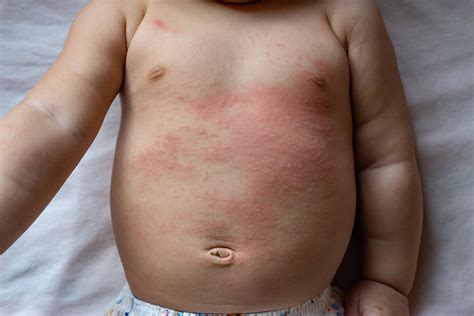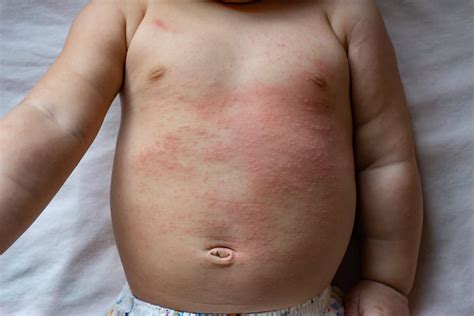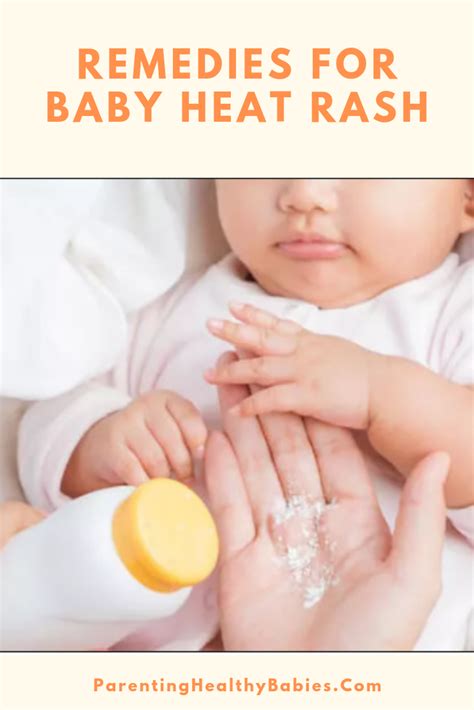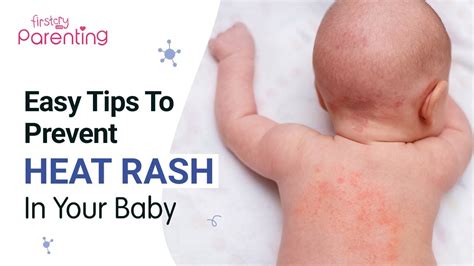Intro
Learn about heat rash in newborns, its symptoms, causes, and treatments. Discover how to soothe prickly heat, manage newborn skin, and prevent future outbreaks with gentle care and home remedies.
Heat rash, also known as prickly heat or miliaria, is a common skin condition that affects many newborns. It is characterized by small, red bumps or blisters that appear on the skin, often in areas where the skin folds, such as the neck, armpits, and groin. Heat rash is usually harmless and temporary, but it can be uncomfortable for the baby and may cause distress for parents. In this article, we will delve into the world of heat rash in newborns, exploring its causes, symptoms, treatment options, and prevention strategies.
Heat rash is often seen in newborns due to their immature sweat glands and the warm environment they are exposed to. When the skin is exposed to heat, the sweat glands produce sweat to cool the body down. However, in newborns, the sweat glands are not fully developed, and the sweat can become trapped under the skin, causing irritation and inflammation. This can lead to the formation of small bumps or blisters, which are characteristic of heat rash. Other factors that can contribute to heat rash in newborns include overdressing, high room temperatures, and humidity.
It is essential for parents to recognize the signs and symptoms of heat rash in their newborn. The condition typically appears as small, red bumps or blisters on the skin, which may be itchy or prickly. The affected areas may also feel warm to the touch and may be tender. In some cases, the bumps or blisters may rupture, causing a clear fluid to leak out. Heat rash can occur anywhere on the body, but it is most commonly seen in areas where the skin folds, such as the neck, armpits, and groin. If you suspect that your newborn has heat rash, it is crucial to consult with your pediatrician to rule out other possible causes of the symptoms.
Causes of Heat Rash in Newborns

Symptoms of Heat Rash in Newborns
The symptoms of heat rash in newborns can vary, but they typically include small, red bumps or blisters on the skin, which may be itchy or prickly. The affected areas may also feel warm to the touch and may be tender. In some cases, the bumps or blisters may rupture, causing a clear fluid to leak out. Heat rash can occur anywhere on the body, but it is most commonly seen in areas where the skin folds, such as the neck, armpits, and groin. If you suspect that your newborn has heat rash, it is crucial to consult with your pediatrician to rule out other possible causes of the symptoms.Treatment Options for Heat Rash in Newborns

Prevention Strategies for Heat Rash in Newborns
Preventing heat rash in newborns is often a matter of taking a few simple precautions. This can include dressing the baby in lightweight, breathable clothing, keeping the room at a comfortable temperature, and avoiding overdressing. It is also essential to ensure that the baby's skin is kept clean and dry, as this can help to prevent the buildup of sweat and bacteria. Additionally, parents can take steps to reduce the humidity in the room, such as using a dehumidifier or keeping the windows open. By taking these precautions, parents can help to reduce the risk of heat rash in their newborn.Complications of Heat Rash in Newborns

When to Seek Medical Attention
If you suspect that your newborn has heat rash, it is essential to consult with your pediatrician to rule out other possible causes of the symptoms. Your pediatrician can examine the affected area and provide a diagnosis and treatment plan. In some cases, your pediatrician may recommend further testing, such as a skin culture, to rule out other conditions. It is crucial to seek medical attention if the condition worsens or persists, as this can indicate a more serious underlying condition.Home Remedies for Heat Rash in Newborns

Natural Remedies for Heat Rash in Newborns
There are several natural remedies that can help to soothe and calm heat rash in newborns. These can include applying aloe vera gel to the affected area, using coconut oil to keep the skin moisturized, and avoiding exposure to heat and humidity. Additionally, parents can try using natural fibers, such as cotton, to dress the baby, as these can help to keep the skin cool and dry. It is essential to consult with your pediatrician before trying any natural remedies, as they can provide guidance on the best course of treatment.Conclusion and Next Steps

We invite you to share your thoughts and experiences with heat rash in newborns. Have you ever dealt with this condition in your baby? What steps did you take to soothe and calm the affected area? Share your story with us in the comments below, and let's work together to support and educate each other on this important topic.
What is heat rash in newborns?
+Heat rash, also known as prickly heat or miliaria, is a common skin condition that affects many newborns. It is characterized by small, red bumps or blisters on the skin, often in areas where the skin folds, such as the neck, armpits, and groin.
What are the symptoms of heat rash in newborns?
+The symptoms of heat rash in newborns can vary, but they typically include small, red bumps or blisters on the skin, which may be itchy or prickly. The affected areas may also feel warm to the touch and may be tender.
How can I prevent heat rash in my newborn?
+Preventing heat rash in newborns is often a matter of taking a few simple precautions. This can include dressing the baby in lightweight, breathable clothing, keeping the room at a comfortable temperature, and avoiding overdressing. It is also essential to ensure that the baby's skin is kept clean and dry, as this can help to prevent the buildup of sweat and bacteria.
What are the treatment options for heat rash in newborns?
+The treatment for heat rash in newborns typically involves keeping the affected area cool and dry. This can be achieved by dressing the baby in lightweight, breathable clothing and keeping the room at a comfortable temperature. In some cases, your pediatrician may recommend the use of topical creams or ointments to help soothe the affected area.
When should I seek medical attention for heat rash in my newborn?
+If you suspect that your newborn has heat rash, it is essential to consult with your pediatrician to rule out other possible causes of the symptoms. Your pediatrician can examine the affected area and provide a diagnosis and treatment plan. In some cases, your pediatrician may recommend further testing, such as a skin culture, to rule out other conditions.
